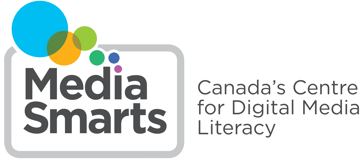Persons with Disabilities
In this lesson, students learn about the ways in which news coverage of an event or issue can be biased, focusing on the aspects of the medium and industry that can lead to bias. They read an article that examines the coverage of mental illness in the news and then participate in an interactive activity that lets them compose their own article. Finally, students find and analyze a recent news story on a mental health topic and write a letter either praising or critiquing it.
Students begin by viewing a slideshow that explores common stereotypes of mental illness and mental illness treatment in media. They read a prepared analysis of the portrayal of mental illness in a TV show popular with teens, then in a small group analyze another text of their choice. Finally, students create an annotated version of a scene or excerpt from a text in which they analyze and evaluate its portrayal of mental illness.
By Dr. Sameer Hinduja of the Cyberbullying Research Centre
Content reposted with permission – original article from Cyberbullying.org
It is easy for many adults – whether educators or parents – to focus on the negatives of social media in the lives of teens today. This is understandable, because they are the ones who have to deal with the fallout when adolescents make mistakes online (cyberbullying incidents, sexting cases, electronic dating violence, digital reputation drama, and similar forms of wrongdoing).
Students are introduced to the idea of “privilege” in relation to diversity and how it applies to media. They then look at a checklist of media related privileges to help them understand the concept.
In this lesson, students consider the idea that a news source can be “accurate but misleading” through the concept of framing. Students learn about the different ways that news stories may be framed, identify examples of framing in a news story, then find and evaluate examples of framing in news stories on a particular issue.
Teachers who include media literacy in their classrooms often face issues that don’t arise in other subjects. Nothing illustrates this better than the issue of diversity in media. It’s not unreasonable for teachers to see the topic as a can of worms and be concerned about offending students and their parents – not to mention worrying about what the students themselves might say. At the same time, it’s a topic that is simply too important to be ignored: what we see in media hugely influences how we see others, ourselves and the world. As a result, an ability to analyze media depictions of diversity is not only a key element of being media literate, it’s essential to understanding many of the social issues and concerns that we face as citizens. That’s why Media Awareness Network has developed That’s Not Me – a new online tutorial for professional development to help educators and community leaders approach this issue through key concepts of media literacy.
In this lesson students consider how well their favourite TV shows, movies and video games reflect the diversity of Canadian society.
